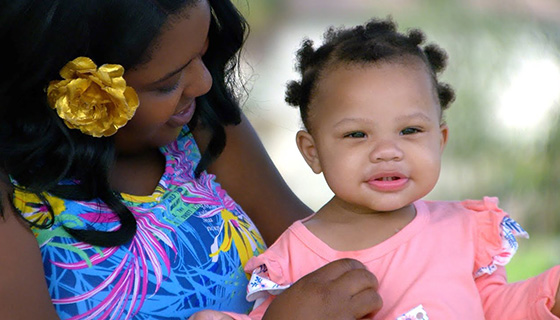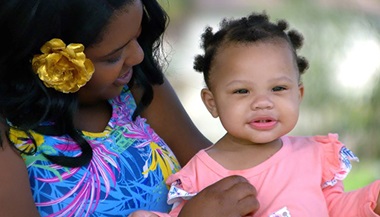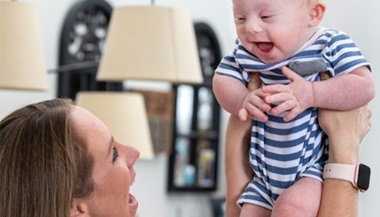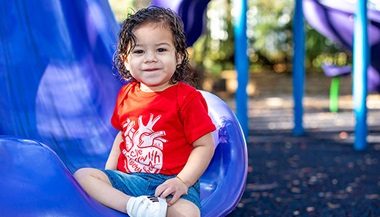Pulmonary Hypertension in Children
Featured Expert:
Pulmonary hypertension is high blood pressure in the lungs. It’s a rare condition but can affect people of any age, including infants and children.
What You Need to Know
- Pulmonary hypertension is high blood pressure in the lungs. It’s an uncommon condition that forces the heart to work harder to deliver blood to the lungs.
- Premature infants with bronchopulmonary dysplasia (underdeveloped lungs) are at risk of developing pulmonary hypertension.
- Management of pulmonary hypertension in children may include supplemental oxygen and medication.
What Is Pulmonary Hypertension in Children?
Most of us are familiar with the term “hypertension,” or high blood pressure. It occurs when blood puts too much force on the blood vessel walls. High blood pressure in the vessels of the lungs makes it harder for the right side of the heart to pump blood into the lungs, where it receives oxygen. “Ultimately, high blood pressure in the lungs can result in poor right heart function and right heart failure,” explains Melanie Nies, M.D., pediatric cardiologist at Johns Hopkins Children’s Center.
What Causes Pulmonary Hypertension in Children?
Pulmonary hypertension in children may develop as a result of congenital heart defects, which are present at birth. It can also be inherited, or run in families.
Persistent pulmonary hypertension in newborns is often related to chronic lung disease. Premature infants with bronchopulmonary dysplasia (underdeveloped lungs and pulmonary blood vessels) are at an especially high risk for the disorder.
Other conditions that increase the risk of pulmonary hypertension in children include:
- Cardiomyopathy, or a weak heart muscle
- Chronic blood clots
- Congenital diaphragmatic hernia, or a hole in the diaphragm, with resultant lung hypoplasia (abnormally small lungs)
- Cystic fibrosis
- Down syndrome
- Viral illnesses
High blood pressure in the lungs without any known cause is called idiopathic pulmonary arterial hypertension. Primary pulmonary hypertension tends to affect adults more than children or infants.
What Are the Symptoms of Pulmonary Hypertension?
Some of the most common symptoms of pulmonary hypertension include:
- Abnormal heartbeat
- Fainting
- Paleness or blue discoloration in the lips, hands or feet
- Poor growth
- Shortness of breath
- Tiredness
These same symptoms can indicate a range of other conditions, so it’s important to talk to your child’s pediatrician if you notice anything out of the ordinary. A doctor can do a thorough physical exam and perform diagnostic testing to get to the root of the problem.
How Is Pulmonary Hypertension in Children Diagnosed?
If your child’s pediatrician or pediatric cardiologist suspects pulmonary hypertension, they may perform the following tests:
- Echocardiogram: An echocardiogram —aka “echo” — is an ultrasound of the heart. It’s a noninvasive test that assesses your child’s heart’s function. An echo can also help the doctor estimate pulmonary pressure.
- Cardiac catheterization: If an abnormal echo indicates pulmonary hypertension, cardiac catheterization can confirm the diagnosis. A doctor called an interventional cardiologist inserts a catheter (thin, flexible tube) into a small incision in the groin and threads it up into the pulmonary artery on the right side of the heart. This test helps your child’s doctor obtain an exact measurement of pulmonary blood pressure.
- Pulmonary vasodilator testing: During a cardiac catheterization or an echo, we may give treatments such as supplemental oxygen or other medications to relax the blood vessels in the lungs. These tests help us gauge how blood pressure in the lungs responds to certain medications.
What Is the Treatment for Pulmonary Hypertension in Children?
“Early recognition of pulmonary hypertension is really important,” urges Nies. “The sooner we can start treatment, the better.” While there is no permanent treatment for pulmonary hypertension, there are a variety of ways to manage the symptoms. For babies and younger children with pulmonary hypertension due to bronchopulmonary dysplasia, the lungs continue to grow and heal through childhood. This can also help resolve pulmonary hypertension.
The most common treatments for pulmonary hypertension include:
- Nitric oxide: Nitric oxide is a vasodilator, which means it relaxes blood vessels. We may recommend inhaled nitric oxide for babies with pulmonary hypertension in the neonatal intensive care unit (NICU). It is not available for use at home.
- Oral medications: Pulmonary vasodilators (sildenafil) or endothelin-receptor antagonists (bosentan) can help reduce pulmonary blood pressure and improve blood flow.
- Oxygen therapy: Children may receive supplemental oxygen in the hospital or at home as an ongoing treatment. This therapy helps oxygenate the blood, takes pressure off the lungs and relaxes blood vessels.
What Is the Outlook for Children with Pulmonary Hypertension?
Thanks to advances in neonatology (newborn care) and echocardiography, it’s easier to diagnose and treat children with pulmonary hypertension earlier in life. Premature infants often outgrow pulmonary hypertension, once they start to feed and develop. After they leave the NICU, many babies do well with oxygen, medication and routine follow-up care.
However, “if preemies grow out of it, they could still be at a higher risk for developing the condition again as adults,” Nies explains. “Their lung tissue won’t be 100% normal, even if it does a significant amount of healing and growing.”
Care for infants and young children with pulmonary hypertension usually requires the collaboration of multiple specialists, including:
- Intensivists
- Neonatologists
- Pediatric cardiologists
- Pediatric pulmonologists
- Pediatricians
The outlook for older children and adults diagnosed with pulmonary hypertension is not as positive. Left undiagnosed and untreated, the condition can cause long-term heart damage and heart failure. Adults with pulmonary hypertension due to a congenital heart defect should seek care from an adult congenital heart specialist, such as Ari Cedars, M.D.
Information for Parents
Nies encourages parents to remember that pulmonary hypertension in children is rare. If you notice symptoms such as shortness of breath or poor growth, it’s probably not cause for alarm. But if you’re concerned, talk to your child’s pediatrician. They may refer you to a pediatric cardiologist for a more detailed assessment. “We’ll take some of that burden off parents,” says Nies. “We can help.”







